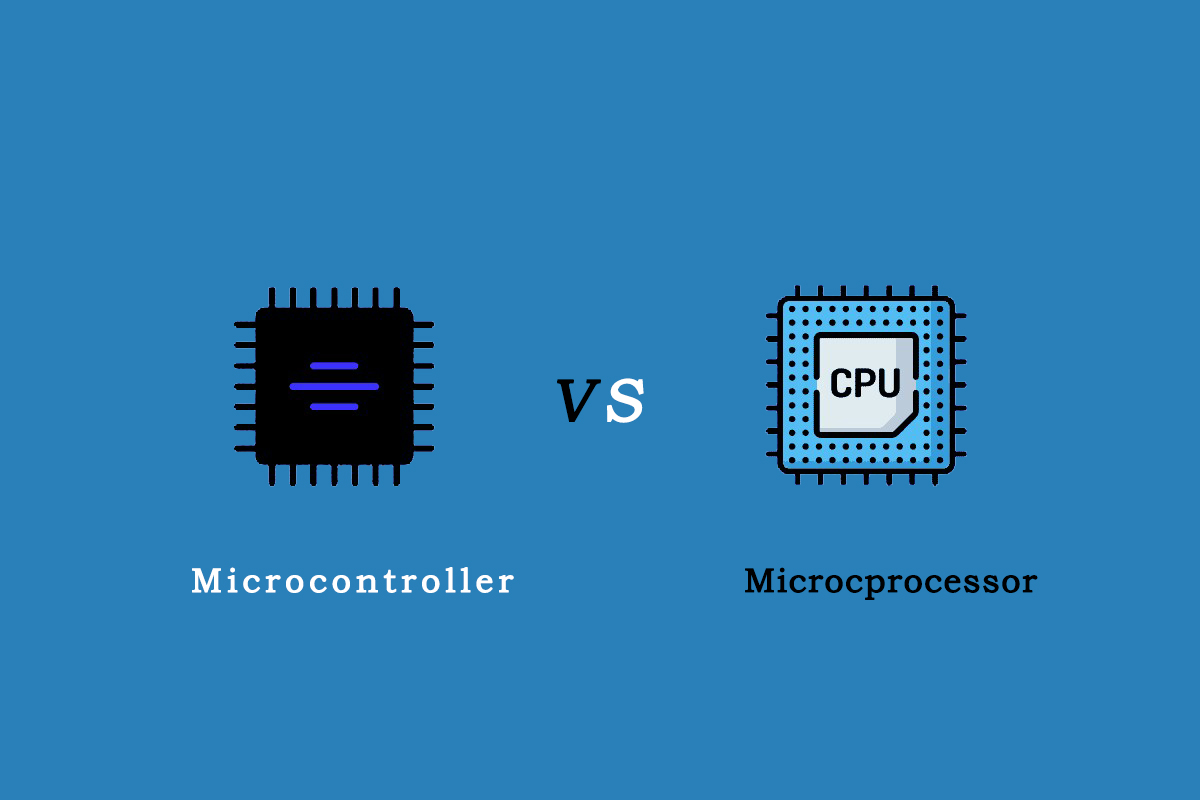Introduction
Embarking on a journey through the landscape of digital electronics, we encounter two central components: microprocessor and microcontroller. Often referred to as the 'brains' of electronic systems, these essential devices play a pivotal role in our digital world. Read this article, you will understand what is microcontroller and microcontroller and what is the difference between microcontroller and microcontroller.

What is Microprocessor?
A microprocessor is an integrated circuit (IC) that contains the functions of a central processing unit (CPU) of a computer on a single or a few integrated circuits. It is a multipurpose, programmable device that accepts digital data as input, processes it according to instructions stored in its memory, and provides results as output.
The microprocessor contains millions (or even billions in modern designs as of 2021) of tiny components such as transistors, resistors, and diodes that work together to perform calculations and make decisions. These operations are based on the instructions provided by a program, which is a sequence of stored instructions.
The microprocessor is the heart of any normal computer, whether it is a desktop machine, a server, or a laptop. Even more specialized devices like graphic cards or the control systems within a car or an airplane have microprocessor.
Microprocessor;also dictate the operation of embedded systems, which are computer systems embedded within other machinery or equipment. These systems perform dedicated functions or a set of functions in real-time computing constraints with high reliability. Examples of embedded systems range from home appliances like washing machines and microwaves to industrial machines like traffic lights and the systems controlling nuclear power plants.
What is Microcontroller?
A microcontroller is a compact integrated circuit designed to govern a specific operation in an embedded system. It's a small, low-cost computer on a single chip that contains a processor (CPU), non-volatile memory for storing software (program memory), volatile memory for storing data (RAM), a clock, and I/O (input/output) interfaces.
Key components of a microcontroller include:
Central Processing Unit (CPU): The brain of the microcontroller. It interprets and executes instructions from the memory and processes data stored in the memory.
Memory: There are typically two types of memory, RAM (Random Access Memory) and ROM (Read-Only Memory). ROM is used to store the program to be executed, while RAM is used for temporary storage of data created and used during the operation of the microcontroller.
Input/Output (I/O) Pins: These pins are used for inputting data into the microcontroller and outputting data from the microcontroller.
Clock System: This is a sort of heartbeat for the microcontroller. The clock system controls the speed at which instructions are executed.
Peripherals: These can include components like timers, counters, communication ports, ADC (Analog to Digital Converters), DAC (Digital to Analog Converters), and other devices that are embedded in the microcontroller to facilitate interfacing with different types of devices.
Microcontroller are typically used in automatically controlled products and devices, such as automobile engine control systems, implantable medical devices, remote controls, office machines, appliances, power tools, toys, and other embedded systems.
Microcontroller vs Microprocessor
Although they share a common heritage, the structural differences between a microprocessor and a microcontroller are significant. Microprocessor, equipped with powerful hardware, excel in tasks requiring substantial computational power. Microcontroller, on the other hand, are more streamlined and flexible, especially suited for specific control-oriented tasks. Next, let's compare the differences between microprocessor and microcontroller in detail:
Microcontroller vs Microprocessor| Aspect | Microprocessor | Microcontroller |
|---|
| Definition | A microprocessor is a multipurpose, programmable device that takes digital data as input, processes it according to instructions stored in its memory, and provides results as output. | A microcontroller is a compact integrated circuit designed to govern a specific operation in an embedded system. |
| Core Components | It consists of the ALU (Arithmetic Logic Unit), control unit and a set of registers. | It is a single integrated circuit that includes a processor (CPU), non-volatile memory for the program (ROM or flash), volatile memory for input and output (RAM), a clock and an I/O control unit. |
| Memory and I/O Components | Microprocessor do not have built-in memory and I/O components. They need to be connected externally. | Microcontroller have built-in memory and I/O peripherals, making them more self-contained. |
| Zero Flag | In microprocessor, the zero flag is set when an arithmetic operation results in zero. It's used in decision making. | Microcontroller also have a zero flag functioning in a similar way. |
| Number of Registers | Microprocessor typically have more registers, which can lead to better performance in processing large amounts of data. | Microcontroller may have fewer registers due to their smaller size and more specific purpose. |
| Power Consumption | Microprocessor typically consume more power. | Microcontroller are designed for energy efficiency, so they tend to consume less power. |
| Cost | Generally, microprocessor are more expensive due to their higher processing power. | Microcontroller are usually cheaper as they are designed for more specific tasks. |
| Complexity of Design | Designing with microprocessor can be more complex, as they require additional components such as memory and I/O interfaces. | Designing with microcontroller can be simpler because many necessary components are already included on-chip. |
| Application | Microprocessor are used in personal computers and servers where a large amount of data processing is required. | Microcontroller are commonly used in embedded systems for specific tasks such as in home appliances, automobiles, and mobile devices. |
Real-World Applications of Microprocessor and Microcontroller
Microprocessor flex their computational muscles in systems ranging from personal computers to supercomputers. In contrast, microcontroller make a quieter but equally impactful contribution to our lives, controlling the operations of numerous everyday appliances, from microwave ovens to car engines.
Making the Choice: Microprocessor or Microcontroller?
Selecting between a microprocessor and a microcontroller is not a binary decision but rather one driven by application requirements. The choice is contingent on multiple factors, including power, performance, cost, and the degree of peripheral integration needed. Keeping an eye on the emerging trends and developments in embedded systems is equally important.
Conclusion
Microprocessors and microcontroller, with their distinct features and applications, serve as complementary forces driving the digital world. As we move forward, the roles of these devices continue to evolve, promising a future where their influence extends further into our lives.

Nantian Electronics a professional distributor of electronic components, providing a wide range of electronic products, saving you a lot of time, effort and cost through our meticulous order preparation and fast delivery service.
Share this post


